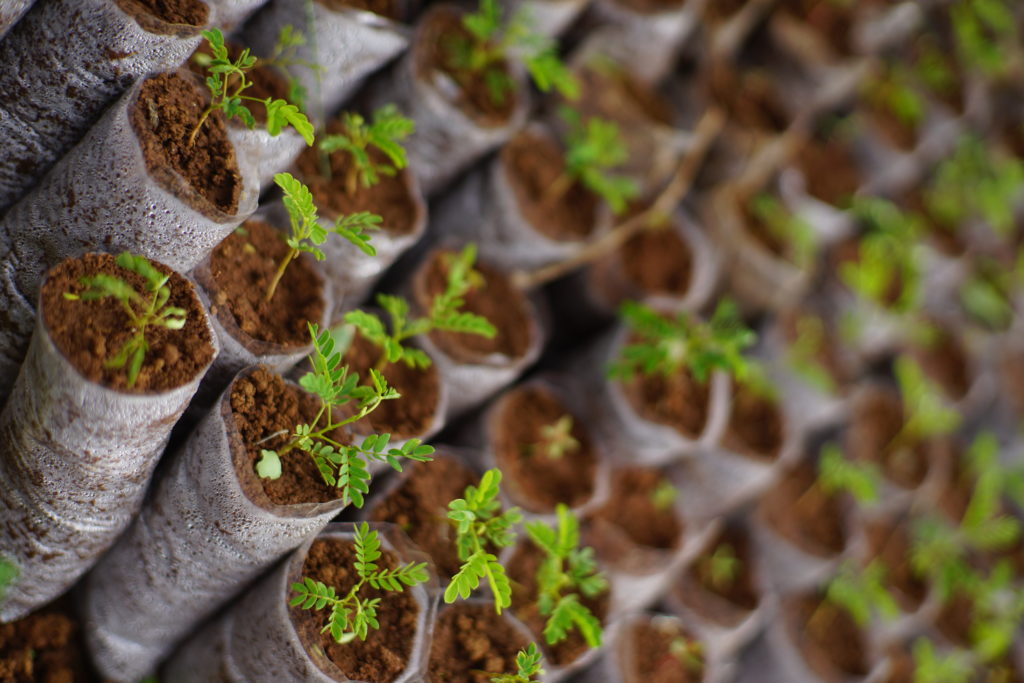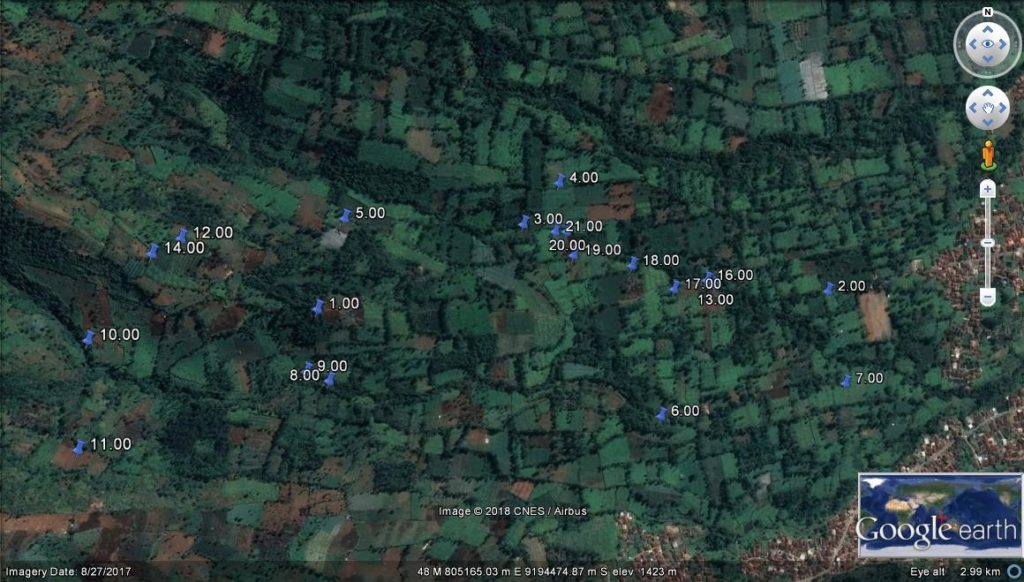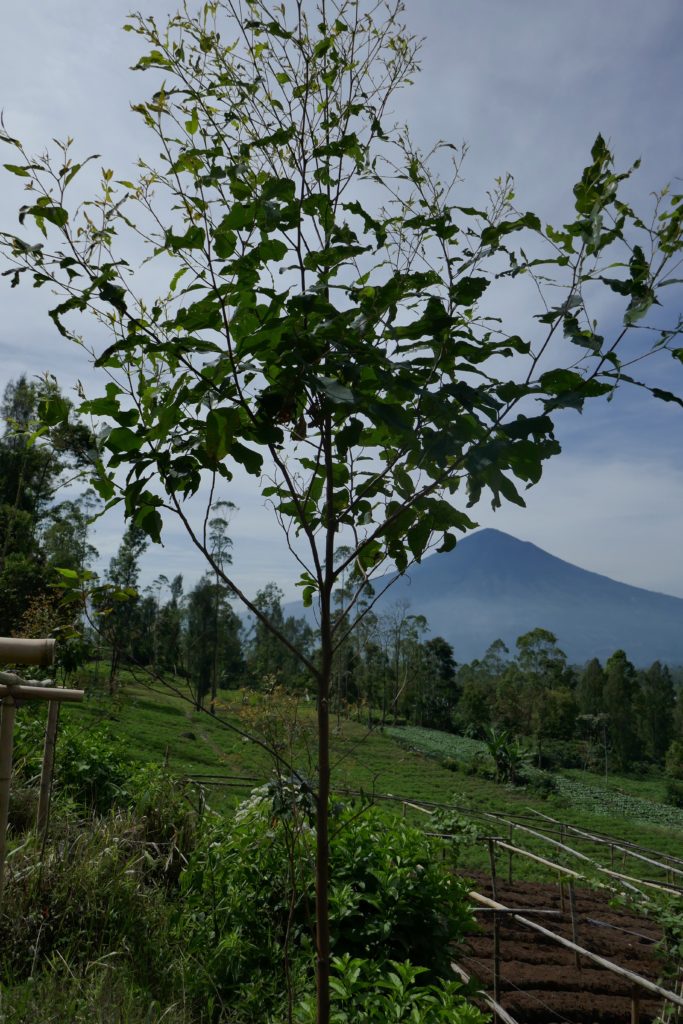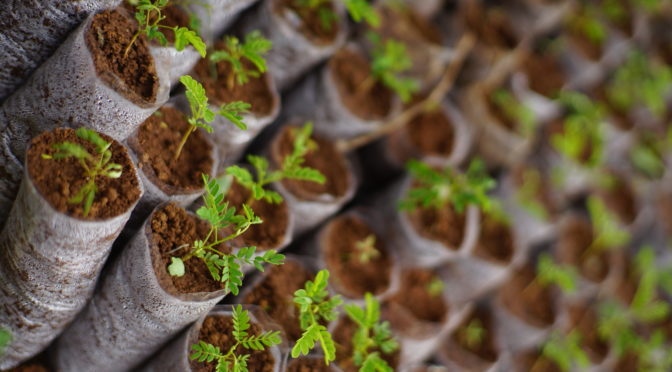The Goal
The goal of LFP’s agroforestry project is to plant more trees to give more connectivity and food sources to the wildlife, particularly slow lorises, around Cipaganti, as many habitats are being degraded by deforestation. We therefore grow and plant trees in the agricultural landscape in which these slow lorises live. Another positive outcome is that these trees also give the farmers some monetary compensation as they can use parts of the trees for timber and even collect oils from the leaves. Read more about agroforestry in Indonesia in general here.

Success Rates
This year, agroforestry tracker Aconk and I conducted surveys of all the trees previously planted in the field in 2016 and 2017. I wanted to see if they were still alive, most importantly, but was also interested in which locations and environments the trees did best. The current total number of surviving trees is 117. An estimated 530 trees were previously planted, giving a survival rate of 22%. The average height for all the trees planted in September 2017 is now 3.03 meters, while the average height for all trees planted in June 2017 is now 2.24 meters. This is an interested result in that the trees planted earlier in 2017 are shorter. This can be explained, however, by the fact that June is a month within the dry season of Indonesia, meaning that the saplings would have received much less water early on than their counterparts planted in the wetter month of September.

The main factor for tree health and survival seems to be how well the farmers tended to the trees. As many of the trees were planted in the dry season, it was vital for the farmers to water them daily in order for the trees to survive. Two farmers did an excellent job for this, one of which had a 95% success rate with the 20 trees we originally gave him.

Some Statistics
I was interested to see if there was any relationship between the total number of trees given and the current success rate of each farmer contributing to the agroforestry programme. If you are interested in statistics, I ran a Pearson’s Correlation test in SPSS, and found that there was a significant negative correlation between the original number of trees given to the farmers and their current success rates, r(21) = -.440, p = .046. This is a logical result in that a farmer who has too many trees to care for, may not be able to adequately care for any of them. There was also a significant positive correlation between the current average heights of the living trees and the success rates, r(21) = .526, p = .014. This again makes sense as a farmer with a higher success rate of keeping trees a live would also overall have taller trees.
This year we hope to plant many more trees!
-by Ella Brown

